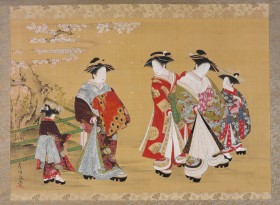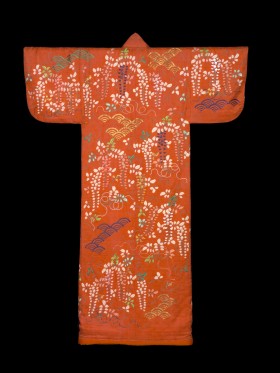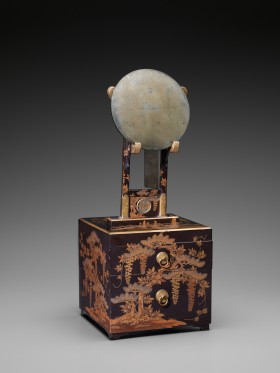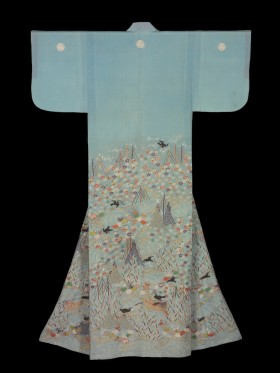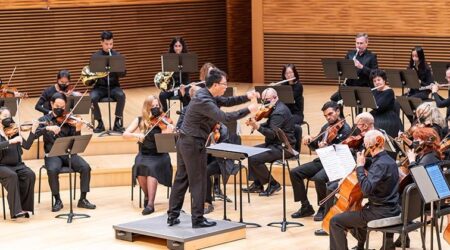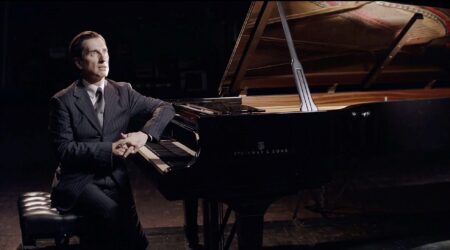The Art of Seduction: Japan’s Floating World 1615–1868
The current exhibit at San Francisco’s Asian Art Museum, ‘’Seduction: Japan’s Floating World,’’ on view through May 10, transports viewers to Japan’s alluring region (think: Amsterdam’s red light district) established in Edo (present-day Tokyo) in the mid-1600s. ‘’Seduction introduces visitors to the exquisite style of Japan’s Edo period,’’ says Jay Xu, director of the Asian […]
The current exhibit at San Francisco’s Asian Art Museum, ‘’Seduction: Japan’s Floating World,’’ on view through May 10, transports viewers to Japan’s alluring region (think: Amsterdam’s red light district) established in Edo (present-day Tokyo) in the mid-1600s.
‘’Seduction introduces visitors to the exquisite style of Japan’s Edo period,’’ says Jay Xu, director of the Asian Art Museum. ‘’The floating world led to incredible innovation in the arts of unparallel beauty and poignancy, and the artworks themselves continue to intrigue and seduce.’’
On loan from the acclaimed private collection of John C. Webber, the centerpiece of this astonishing exhibition is ‘’A Visit to the Yoshiwara,’’ a grand, 60-foot-long hand scroll by Hishikawa Moronobu, offering a visually rich virtual tour of Edo’s life in the 17th century. Debuting its rare public showing at the Asian Art Museum, it is truly a gem worth spending a few hours with.
‘’The scroll culminates in a fascinating glimpse into the interior of a premium house of assignation, where wealthy clients dally with elite courtesans,’’ describes Laura Allen, Curator of Japanese Art at the Asian Art Museum. ‘’The elegant furnishings and beautiful clothing that appear throughout the scroll are brought to life in objects throughout the museum’s galleries.’’
It’s not all glamour, however. The museum’s press release states, ‘’By the end of the 18th century, more than 4,000 prostitutes worked in Yoshiwara. Many of them started life as girls from impoverished homes in the countryside, bought from their families, taken to the quarter at age 7 or 8, trained, and bound to the brothel owners during the term of contracts lasting roughly ten years. While the tiny minority of elite courtesans may have led relatively comfortable lives, with fancy clothes and access to teachers, most Yoshiwara women were not so fortunate. Edo sex workers were subject to daily quotas. Unwanted pregnancies and venereal disease were endemic. These women were sexually exploited in a system of forced and strictly controlled prostitution.’’
Known as the ‘’floating world’’ or Ukiyo, due to its famed pleasure district the Yoshiwara, the exhibit of more than 50 masterpieces showcases 18th century paintings by some of Japan’s most important artists, as well as stunning and luxurious Japanese kimonos, woodblock-printed guides, and decorative arts which depict the story of art imitating life’s chronologies of seductive courtesans, geishas, glamorous Kabuki actors, and intimate customs of fantasies and desires.
‘’Seduction is an exciting topic, and I know you will find the artworks in the show fascinating and even, perhaps, enticing enough to want to share with your friends,’’ says Allen. ‘’Let me set the stage. The term floating world refers to an idea, newly minted in the early 17th century, of an imaginary realm of stylish pleasures, witty repartee, and arousal – in fact, a world apart from the straight-laced social dictates imposed by the military rulers of Japan during the 250 year long Edo period. Floating on the currents of pleasure was an attractive concept, embodied in such physical locales as Kabuki theaters and brothel districts. Ground zero for the floating world was the city of Edo.’’
Ah, if only sex columnist Carrie Bradshaw and her three friends – Samantha, Charlotte, and Miranda of ‘’Sex and The City,’’ a popular show about single women who are in constant unsuccessful romantic pursuits, exploring Manhattan’s dating and mating habits – could see and get inspired by the Yoshiwara’s seductive world, their sex lives would definitely be more pleasurable.
This is truly a season for Japanese art at one of my favorite museums in the City by the Bay. For detailed information on the museum’s exhibits, special lectures, and hours of operation, visit www.asinart.org or call 415–581–3500.
Photos courtesy of the Asian Art Museum.
Lina Broydo immigrated from Russia, then the Soviet Union, to Israel where she was educated and got married. After working at the University in Birmingham, England she and her husband immigrated to the United States. She lives in Los Altos Hills, CA and writes about travel, art, style, entertainment, and sports. She hardly cooks or bakes, with no borsch or piroshky on her home cooking menu. Therefore, she makes reservations and enjoys dining out, mostly sushi.
By Lina Broydo


